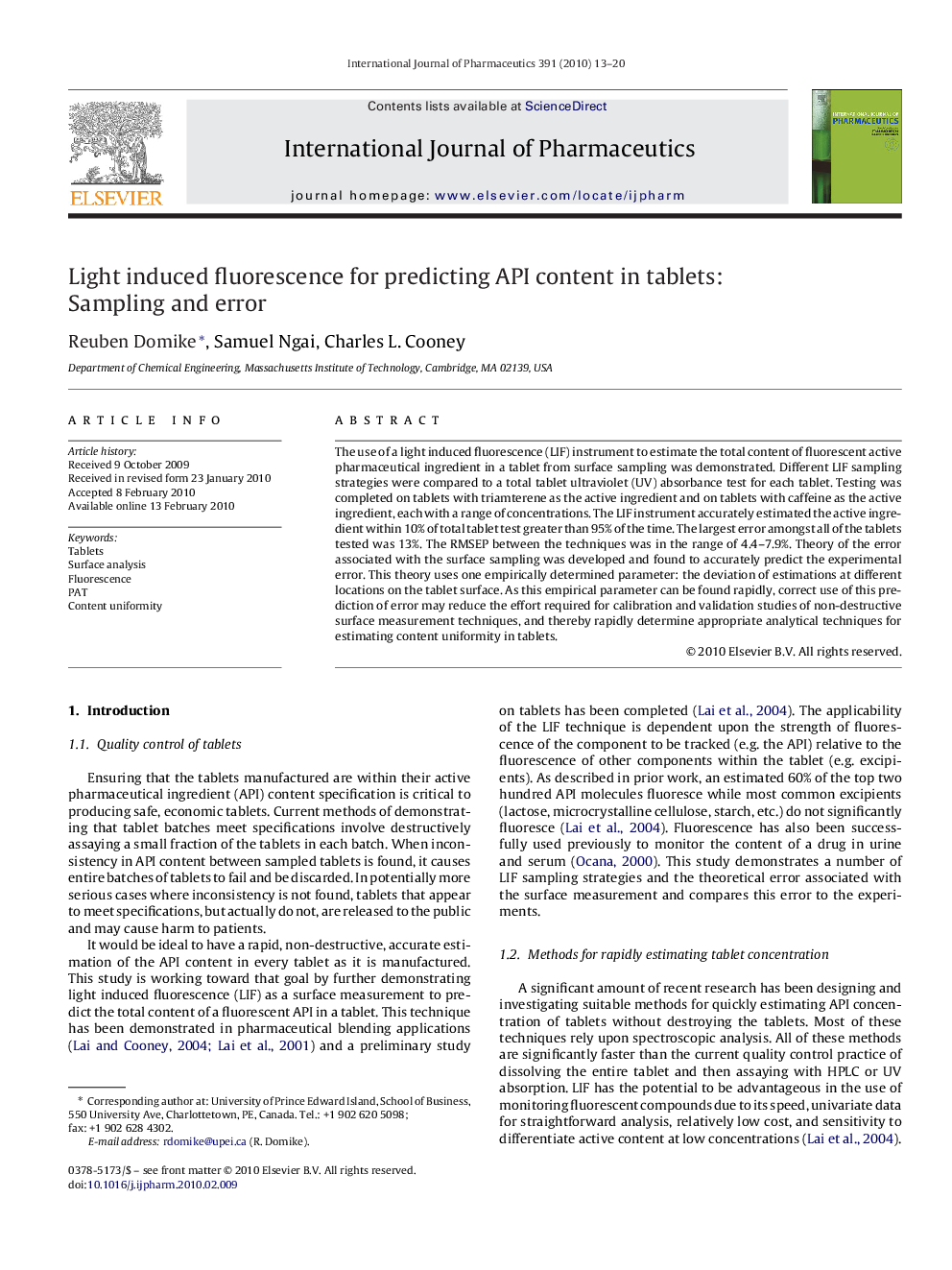| Article ID | Journal | Published Year | Pages | File Type |
|---|---|---|---|---|
| 2504091 | International Journal of Pharmaceutics | 2010 | 8 Pages |
Abstract
The use of a light induced fluorescence (LIF) instrument to estimate the total content of fluorescent active pharmaceutical ingredient in a tablet from surface sampling was demonstrated. Different LIF sampling strategies were compared to a total tablet ultraviolet (UV) absorbance test for each tablet. Testing was completed on tablets with triamterene as the active ingredient and on tablets with caffeine as the active ingredient, each with a range of concentrations. The LIF instrument accurately estimated the active ingredient within 10% of total tablet test greater than 95% of the time. The largest error amongst all of the tablets tested was 13%. The RMSEP between the techniques was in the range of 4.4-7.9%. Theory of the error associated with the surface sampling was developed and found to accurately predict the experimental error. This theory uses one empirically determined parameter: the deviation of estimations at different locations on the tablet surface. As this empirical parameter can be found rapidly, correct use of this prediction of error may reduce the effort required for calibration and validation studies of non-destructive surface measurement techniques, and thereby rapidly determine appropriate analytical techniques for estimating content uniformity in tablets.
Related Topics
Health Sciences
Pharmacology, Toxicology and Pharmaceutical Science
Pharmaceutical Science
Authors
Reuben Domike, Samuel Ngai, Charles L. Cooney,
